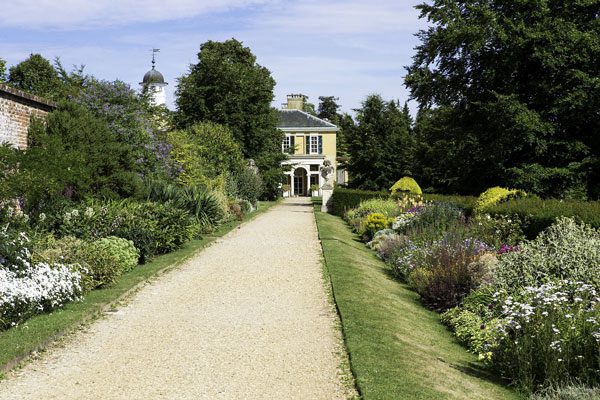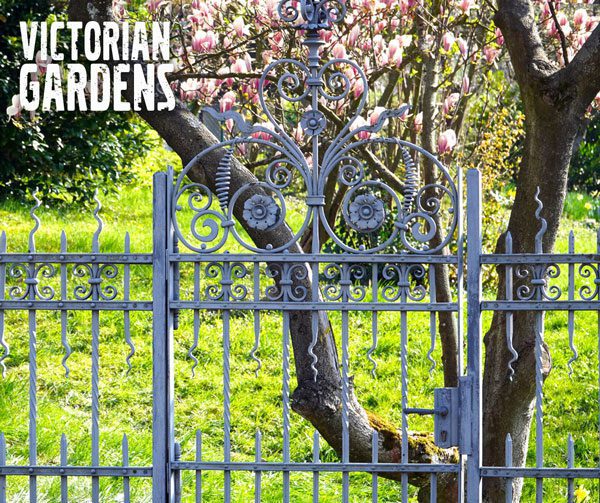The Victorian Era in the United Kingdom is the period of the reign of Queen Victoria beginning on June 20th, 1837, until her death on January 22nd, 1901. There were a lot of changes, politically, socially, and religiously during this time. It was also an era of advancement in science, technology, and engineering.
The period known as the Mid-Victorian era (1850-1870) has been called Britain’s “Golden Years” by historians, as increased industrialization led to a growth in the national income. There was peace abroad and at home.
With the social and economic advances, the British had more leisure time on their hands than ever before, and one result of this was the “Victorian garden.” Beautiful gardens and landscaping weren’t just for kings and queens anymore!
The wealthy had larger spaces for their gardens, but the middle class wasn’t left out. With all the changes taking place, middle-class families didn’t have to focus their gardening only on food necessities (fruits, veggies, herbs). They could use some of that extra free time to create beautiful gardens with visuals and aesthetics.
SOME BASIC ELEMENTS OF VICTORIAN GARDENS
Lawn

These days, lawn care commercials send a clear message: not only should I be focusing all my mental and physical energy on my lawn from the moment the snow starts to melt, but the state of my yard is also the greatest indicator of my status as a man.
In Victorian Gardens, a manicured lawn was a canvas for the garden and landscaping as a whole.
The lawns needed to be green and well-maintained because that’s where one would throw parties, play lawn games, and serve tea to their guests. But it also would be the base for all the trees, shrubs, flowers, and ornamentation that are the staple of any classic Victorian garden.
Flowers

Flower gardens and beds were a favorite of classic Victorian-era gardeners. Two very different design styles emerged.
One style, called carpet bedding, was a much more precise and manicured look that involved selecting flowers of all the same height. This style often meant creating designs (geometric shapes and mosaics) within the bed using symmetry and colors. This approach requires a decent amount of planning and precision, but the look can be incredible.
The other design style from this time is called ‘Herbaceous Border’ (AKA’ Perennial Border’). This style emerged a little later in the Victorian Era and was popularized by the famous British horticulturist, Gertrude Jekyll. Jekyll’s Herbaceous Border garden design creates a dramatic effect by using multiple colors, shapes, and sizes on a large scale.
Start with the smaller plants along a border and then use larger plants as you move out from the edges with the tallest ones in the back, packing everything tight together. I have generally seen this style of design used to frame a pathway. When used on both sides of a path, it can be quite dynamic.
The reason it’s called a herbaceous/perennial border is that the plants used in this style are, big surprise, perennial herbaceous plants. These are plants that live for more than two years and are soft-stemmed and non-woody.
The following is a list of classic Victorian flower varieties to get you started:
- Acacia, Ageratum, Alonsoa, Amaranthus, Aster
- Scarlet Basil, Begonia Tuberous, Begonia, Bluebell
- Caladium, Calendula, Campanula, Chrysanthemum, Cobaea, Cockscomb, Coleus
- Dianthus, Dusty Miller, Fern, Fuschia
- Geranium, Scented Geranium, Heliotrope
- Impatiens Lobelia Marigold, Moonflower, Morning Glory, Nasturtium
- Oxalis Pansy, Periwinkle, Petunia, Portulaca, Primrose, Rose, Miniature Rose
- Snapdragon, Sweet Alyssum, Thunbergia, Verbena, Zinnia
Fencing

Fencing was essential to Victorian gardens. In part, it was used to delineate property lines. But there was also, as with everything else, the ability to display one’s economic status with the type of fencing used.
Cast iron was the material of choice for folks of the Victorian era, and often, the more impressive the home, the more ornate was the garden fencing.
Those that couldn’t do cast iron could get away with rustic wood fencing, as long as it wasn’t a wood picket fence. Those were considered old fashion and – if used at all – would have to be covered/hidden using vines or shrubs.
And speaking of shrubs, they could be used as fencing all on their own. Marking pathways, bordering property lines, or hiding a house’s unattractive foundation are all ways that you can use shrubs in your landscaping when channeling your inner Victorian Era gardener.
I came abroad from UK when i retired and built house and Edwardian art and craft garden rooms on 5 acres of ancient cow pasture . Taken 12 years of hard slog and cash to create a cross between Hidcote and Wollerton old hall gardens mingled well in my own designs. One can almost sense the waft of a long skirt among the heavy heady scent of old roses . England at its best in rural Europe
Awesome, I am 70 years old, and have always loved victorian styles, houses, gardening styles, and movies!! Please include me on any newsletters you may have?
Thanks, Gordon Subject
Hey there Gordon, you can sign up for our newsletter here :
https://gardenculturemagazine.com/subscribe/
Happy growing.